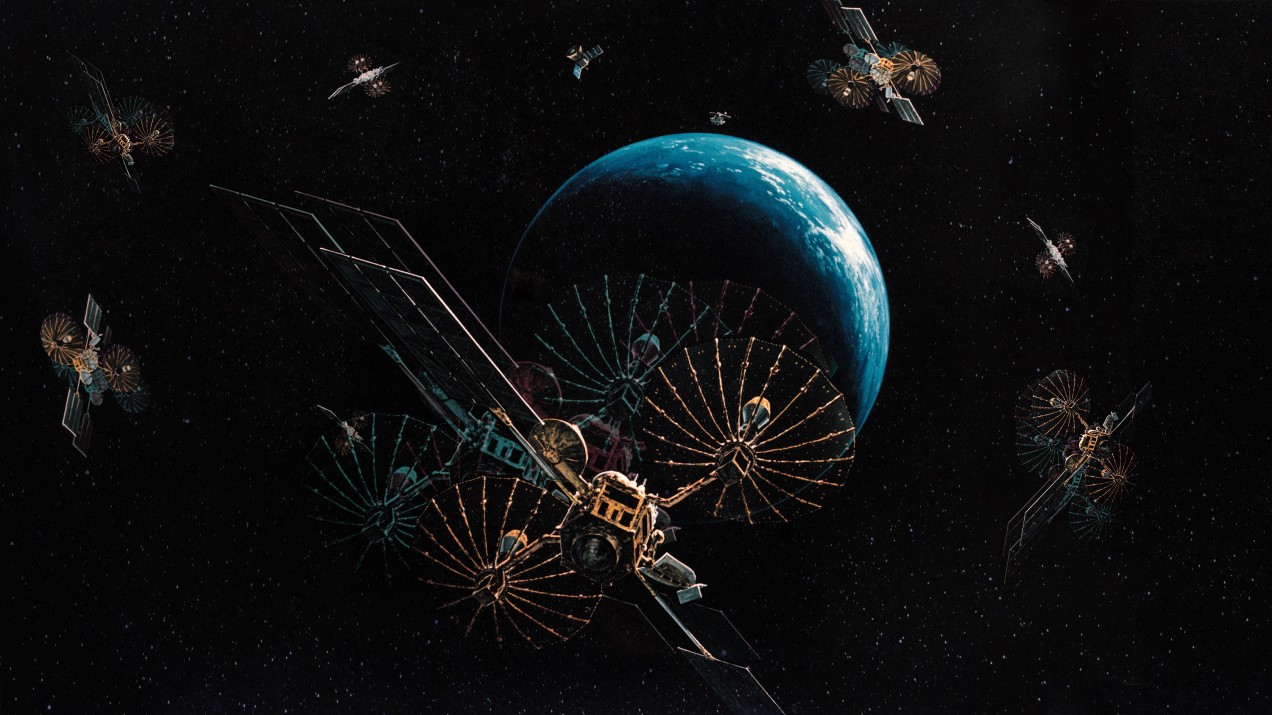

Space
Why the quantum internet should be built in space
The best way to distribute quantum entanglement around the globe is via a massive constellation of orbiting satellites, physicists say.

The quantum internet is a dream that many technologists have expounded in recent years. The idea is to exploit the strange quantum properties of photons and electrons to send messages with perfect secrecy.
That has obvious application for governments and the military, but it is increasingly of interest to banks and other commercial operations that need to secure everything from contracts to financial transactions. What’s more, this kind of security is increasingly needed because quantum computers will be able to break the codes currently used to keep many messages private.
And that raises an interesting question: How should scientists and engineers go about the task of building a quantum internet that spans the globe?
Today we get an answer thanks to the work of Sumeet Khatri and colleagues at Louisiana State University in Baton Rouge. This team has studied the various ways a quantum internet could be built and say the most cost-effective approach is to create a constellation of quantum-enabled satellites capable of continuously broadcasting entangled photons to the ground. In other words, the quantum internet should be space-based.
First some background. At the heart of any quantum network is the strange property of entanglement. This is the phenomenon in which two quantum particles share the same existence, even if they are separated by vast distances. It ensures that a measurement on one of these particles immediately influences the other, a marvel that Einstein called “spooky action at a distance.”
Physicists usually distribute entanglement using pairs of photons created at the same point and instant in time. When the photons are sent to different locations, the entanglement linking them can be exploited to send secure messages.
The problem is that entanglement is fragile and hard to preserve. Any small interaction between one of the photons and its environment breaks the link. Indeed, this is exactly what happens when physicists transmit entangled photons directly through the atmosphere or through optical fibers. The photons interact with other atoms in the atmosphere or the glass, and the entanglement is destroyed. It turns out the maximum distance over which entanglement can be shared in this way is just a few hundred kilometers.
How then to build a quantum internet that shares entanglement across the globe? One option is to use “quantum repeaters”—devices that measure the quantum properties of photons as they arrive and then transfer these properties to new photons that are sent on their way. This preserves entanglement, allowing it to hop from one repeater to the next. However, this technology is highly experimental and several years from commercial exploitation.
So another option is to create the entangled pairs of photons in space and broadcast them to two different base stations on the ground. These base stations then become entangled, allowing them to swap messages with perfect secrecy.
In 2017, a Chinese satellite called Micius showed for the first time that entanglement can indeed be shared in this way. It turns out that photons can travel much further in this scenario because only the last 20 kilometers or so of the journey is through the atmosphere, provided the satellite is high in the sky and not too close to the horizon.
Khatri and co say that a constellation of similar satellites is a much better way to create a global quantum internet. The key is that to communicate securely, two ground stations must be able to see the same satellite at the same time so that both can receive entangled photons from it.
At what altitude should the satellites fly to provide coverage as broad as possible? And how many will be needed? “Since satellites are currently an expensive resource, we would like to have as few satellites as possible in the network while still maintaining complete and continuous coverage,” say Khatri and co.
To find out, the team modeled such a constellation. It turns out there are a number of important trade-offs to take into account. For example, fewer satellites can provide global coverage when they orbit at a high altitude. But higher altitudes lead to greater photon losses.
Also, satellites at lower altitudes can span only shorter distances between base stations, because both must be able to see the same satellite at the same time.
Given these limitations, Khatri and co suggest that the best compromise is a constellation of at least 400 satellites flying at an altitude of around 3,000 kilometers. By contrast, GPS operates with 24 satellites.
Even then, the maximum distance between base stations will be limited to about 7,500 kilometers. This means that such a system could support secure messaging between London and Mumbai, which are 7,200 km apart, but not between London and Houston, 7,800 km apart—or indeed between any cities that are farther apart. That’s a significant drawback.
Nevertheless, a space-based quantum internet significantly outperforms ground-based systems of quantum repeaters, say Khatri and co. Repeaters would have to be spaced at intervals of less than 200 kilometers, so covering long distances would require large numbers of them. This introduces its own set of limitations for a quantum internet. “We thus find that satellites offer a significant advantage over ground-based entanglement distribution,” say Khatri and co.
Of course, such a system would require significant investment. China has an obvious advantage, having already tested an orbiting satellite with this kind of technology. And it has plans to go further.
By contrast, Europe and the US appear to have less ambition in this respect. That could change quickly if this technology can prove its worth. if so, the quantum space race may be just about to heat up.
Ref: arxiv.org/abs/1912.06678 : Spooky Action at a Global Distance – Resource-Rate Analysis of a Space-Based Entanglement-Distribution Network for the Quantum Internet